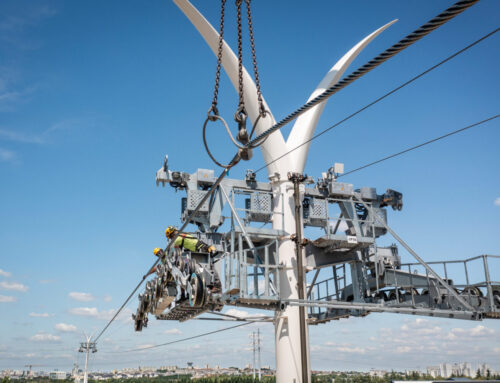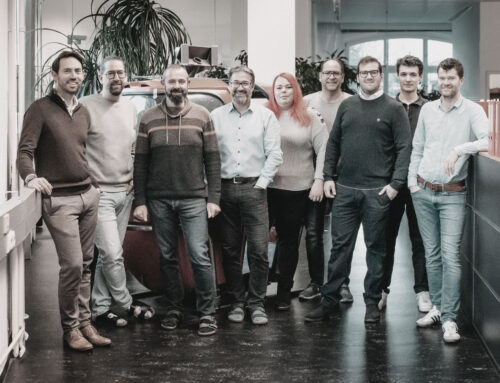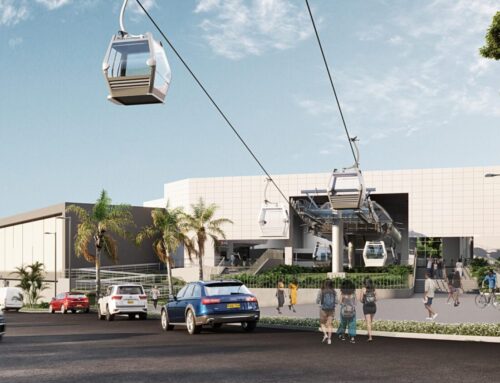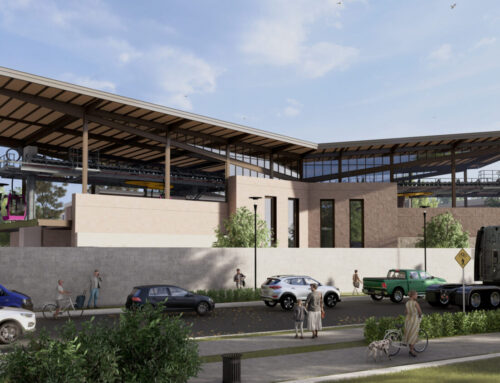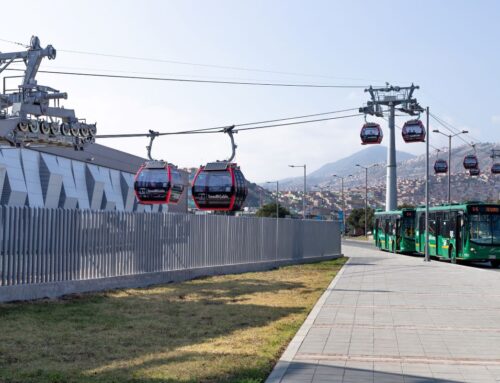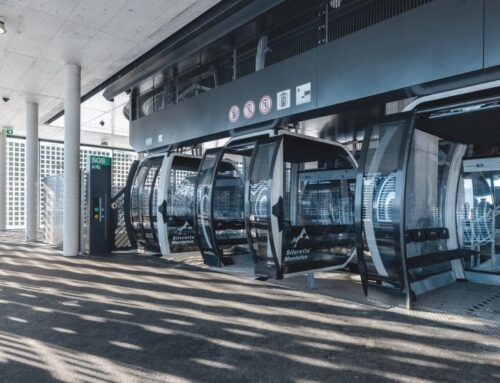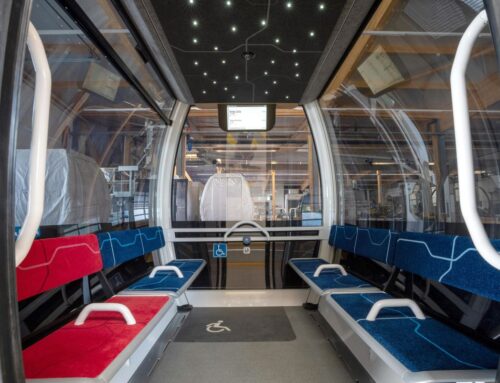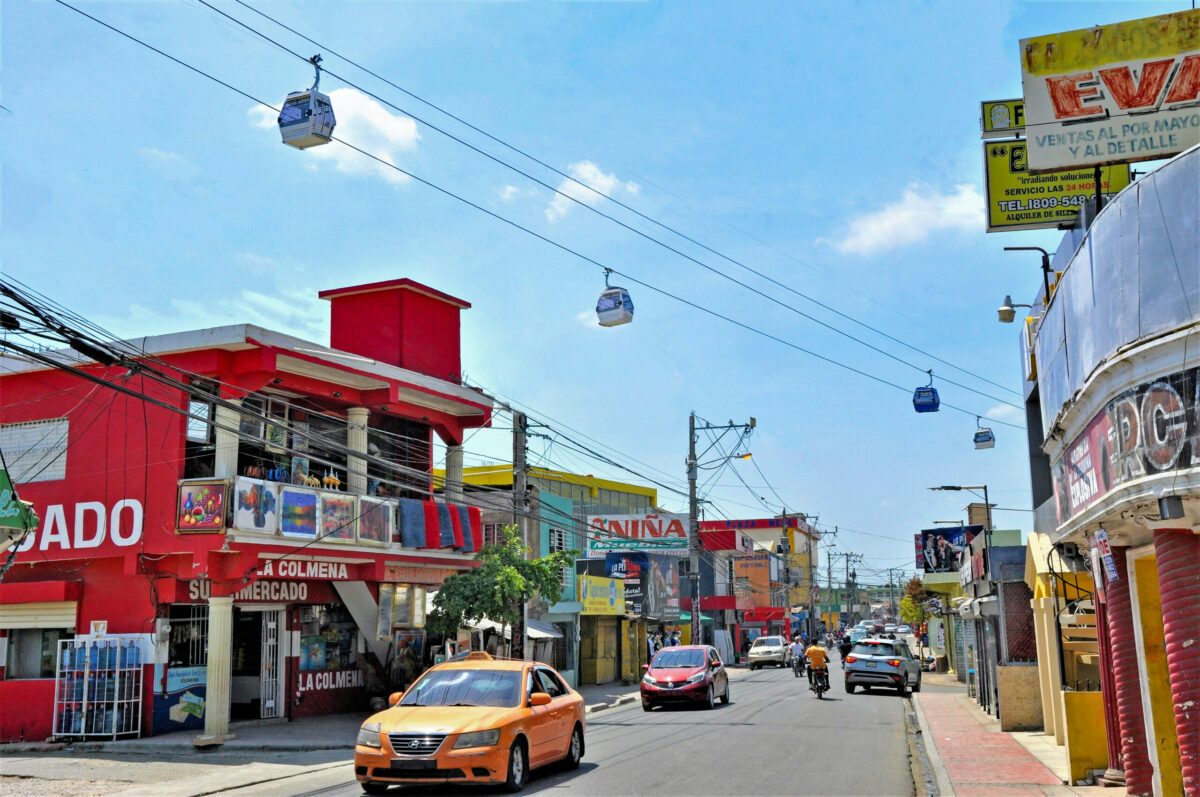
Cities, SI Urban 2/2024
Cable Cars: ropeways as a sustainable system for urban mobility
The further development of urban mobility is becoming an ever greater challenge worldwide. Growing individual traffic, an increasing shortage of space and the need for environmentally friendly transportation in times of climate and energy crisis are increasingly prompting a rethink.
In many metropolitan areas, ropeways are at the forefront of the search for strategies for the sustainable expansion of public transport services.
The advantages of state-of-the-art ropeway technologies from the HTI Group (which operates worldwide with the ropeway companies LEITNER, POMA and BARTHOLET) range from low investment and operating costs, high reliability and accessibility to adaptability to a wide variety of topographical and urban conditions.
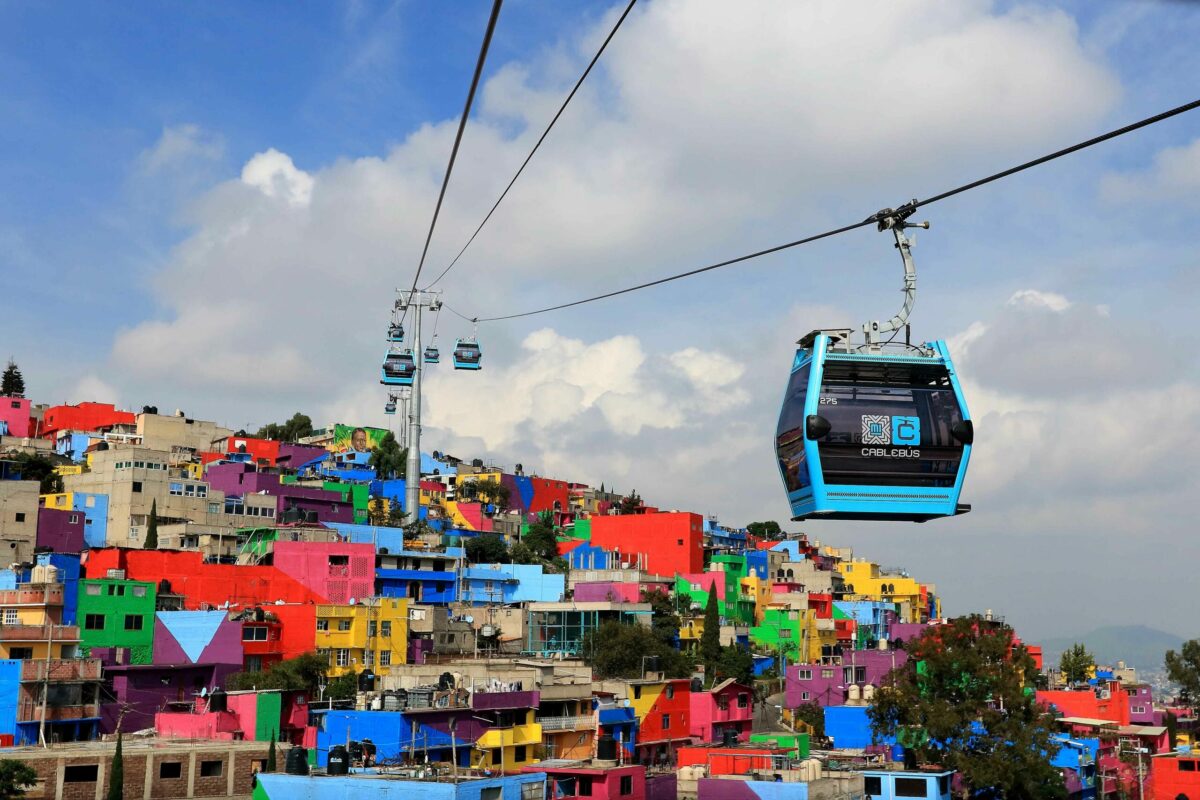
The Cablebús 2 cable car system in Mexico City
transports up to 85,000 people per day.
Advantages of urban cable cars
Mexico City, Medellin, Santo Domingo and many other major cities around the world are already demonstrating how effectively ropeways can be integrated into public transport networks on a daily basis.
As a prime example of electromobility, they meet the most important requirements for a climate-friendly means of transportation and avoid direct CO2 emissions by being powered by electricity and not using fossil fuels.
But that‘s not the only reason why ropeways are so well suited to the city. They also don‘t take up much space, can cross any obstacle and save passengers a significant amount of time.
What‘s more, a single motor moves several vehicles at once. Ropeways can also play an extremely useful role in connecting sensitive recreational areas in urban environments. They require minimal ground contact and have only a minor impact on the environment.
The Téléo in Toulouse (France)
is running since 2022 and daily transports 8,000 passengers.
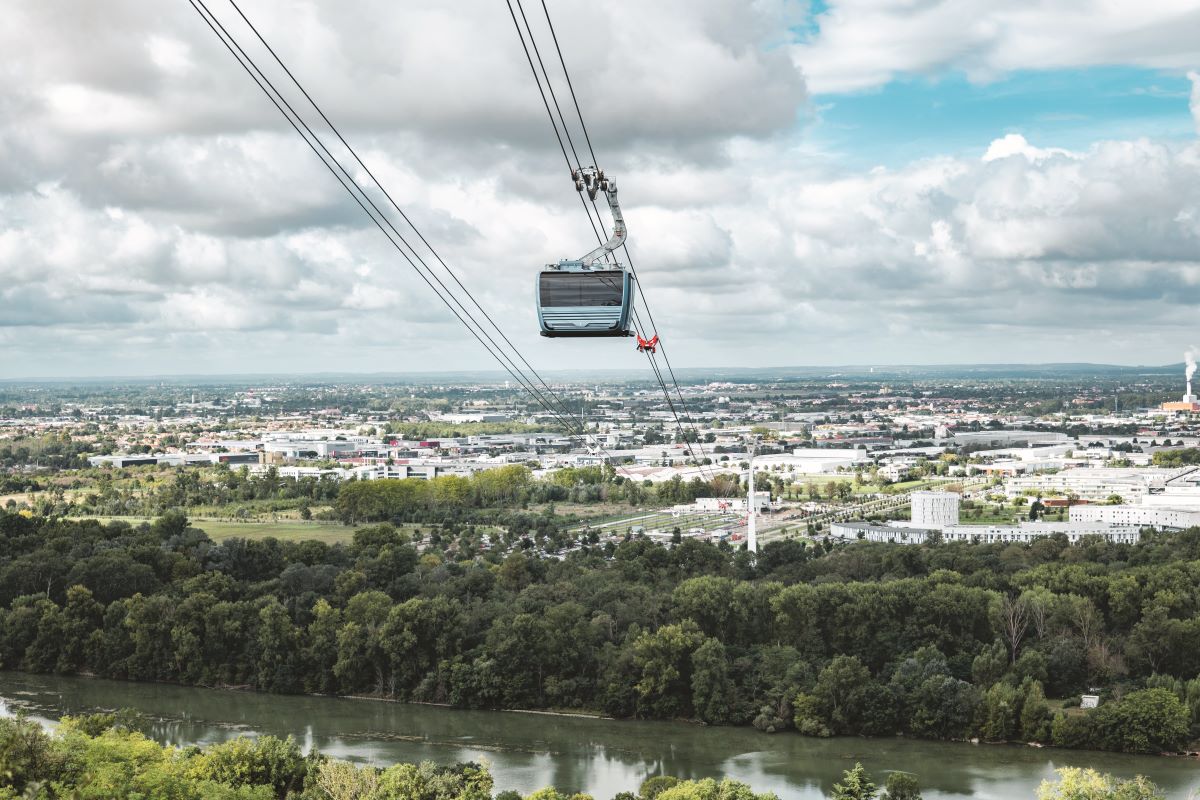
Transport without delay
Above all, the capacity bottlenecks of urban road networks, characterized by frequent traffic jams and accidents, leave the ropeway unimpressed and guarantee passengers delay-free transport.
The “exclusive“ aerial lane enables even travel times without waiting times and timetables and is not affected by traffic on the road. Another advantage is the so-called “level walk-in“, meaning barrierfree boarding and disembarking in all cabins.
Thanks to the low entry speed into the stations and stop-and-go technology, use with strollers, wheelchairs or bicycles is also possible without any restrictions. In addition, the ropeway is by far the safest means of transportation in urban areas.
Another argument used by many local authorities when making their decision is the cost. Compared to other means of transportation, urban ropeways are particularly cost-effective – from construction to operation and maintenance.
The cost of a ropeway is around half that of a streetcar and around a tenth that of a metro. Thanks to their modular design, ropeways from the HTI Group can be realized within a short time of the order being placed.
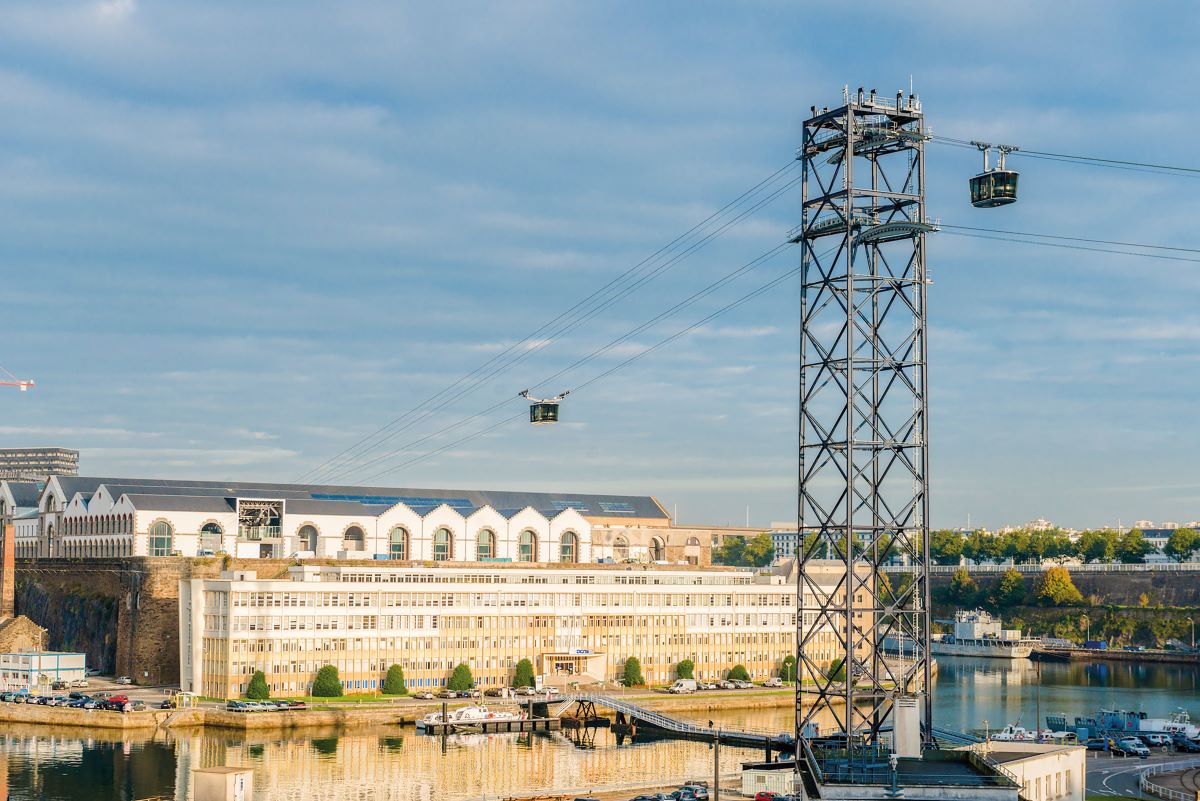
BARTHOLET
built France´s first cable car integrated into public transport in Brest in northern France back in 2016. © HTI
Ropeways can overcome any obstacle
The ability of a ropeway to cope with steeper gradients than any other vehicle and to adapt to any terrain proves to be an enormous advantage. It doesn‘t matter whether an area is pa rticularly densely builtup, spread over several elevations or crossed by water:
ropeway routes can be adapted very individually to the respective requirements and thus implemented as close as possible along the shortest distance.
Towers and stations need only little space and the ropeways blend in perfectly with the cityscape.
Examples of urban cable cars built by HTI:
- LEITNER: Ecatepec de Morelos (2x), Mexico City, Ankara, Barcelona, Berlin, Cali, Pisa, Perugia
- POMA: Santo Domingo (2x), Santiago de los Caballeros, Medellin (6x), La Réunion, Toulouse, Tizi Ouzou, Pereira, Guayaquil
- BARTHOLET: Brest, Moscow
Best practice examples
The megacity of Ecatepec de Morelos, part of the metropolitan region around Mexico City, is regarded worldwide as a pioneer in the integration of ropeways into the urban transportation network.
The now eight-year success story began with the construction of the five kilometer-long “Mexicable 1 – Linea Roja“. With the official opening of “Mexicable 2 – Linea Verde“ on March 30, 2023, an important gap was closed within the ropeway network of Ecatepec de Morelos.
Since then, the LEITNER installation, which consists of three interconnected ropeways, has been transporting around 35,000 people from the municipalities of Ecatepec de Morelos and Tlalnepantla de Baz to Mexico City every day.
Also in Mexico City, the “Cablebús 2“ ropeway system from LEITNER has been transporting up to 85,000 people per day over a distance of 10.6 kilometers and seven stations since its opening in 2021.
The 10-passenger gondola in the district of Iztapalapa, in the south-east of the Mexico City metropolitan region, offers the residents of the area, with a population of 1.8 million, a much better connection: the travel time for this route has been reduced from 75 to 36 minutes.
